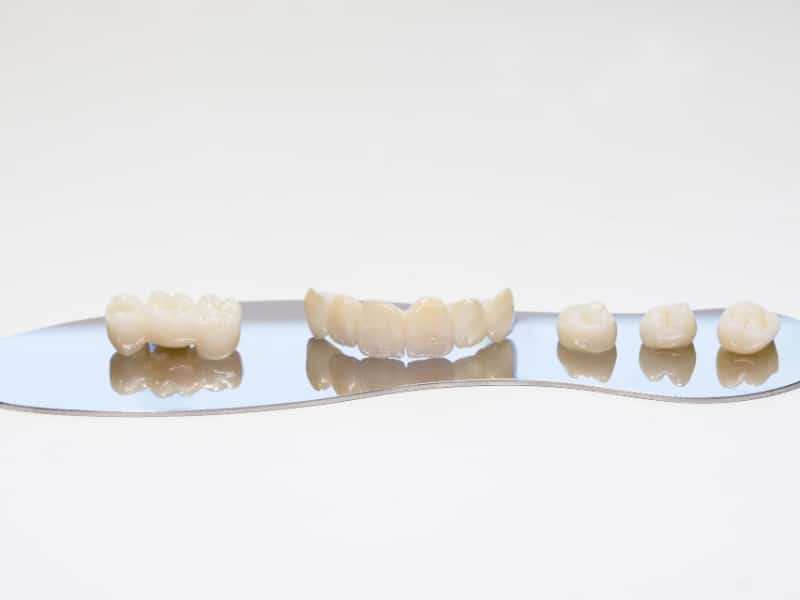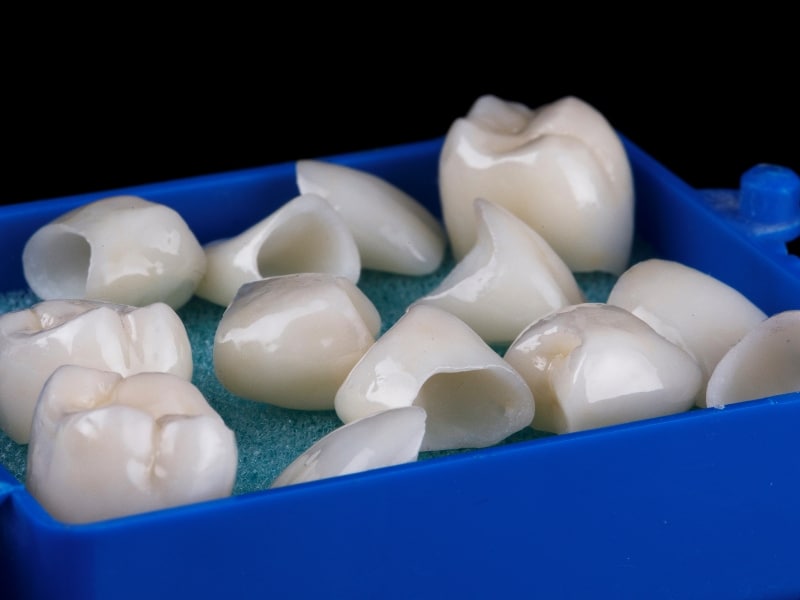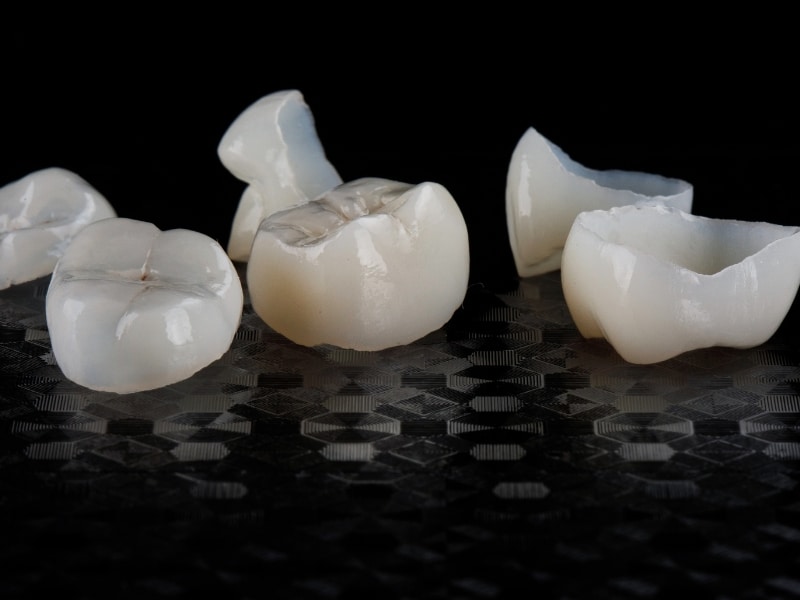Wondering why dental crowns sometimes need to be replaced even when they still look good? While crowns are built to last, everyday habits and microscopic wear can quietly weaken them. Ignoring minor signs—like cracks or looseness—can lead to costly dental problems. Timely crown replacement isn’t just cosmetic; it’s vital for preserving your long-term oral health. This article will guide you through the real reasons crowns wear out, the signs you shouldn’t ignore, and what you can do next.
What signs show your crowns need to be replaced?
Spotting early signs can help you avoid serious hassles. Keep an eye out for these clues:
- Ongoing pain, such as a dull ache or sharp twinge, especially when biting down, often indicates underlying decay that can spread if left unaddressed.
- Visible damage, such as cracks, chips, or rough edges, indicates that the crown is losing its integrity and may allow bacteria to seep underneath.
- Gum irritation: Swelling or redness near the crown suggests bacteria may be creeping under the edges and irritating the gum tissue.
- Loose fit: If your crown shifts when you eat or floss, it’s time for professional attention to prevent the tooth below from becoming exposed or fractured.
Catching these indicators early helps you plan and choose reliable solutions for crown replacement before complications set in.
Why do crowns need to be replaced eventually due to everyday wear?
Daily life takes a toll on crowns, no matter how strong they seem. Consider these common culprits:
- Thermal stress: Hot drinks and cold snacks cause expansion and contraction, which can weaken bonds over time and lead to the creation of microfractures.
- Grinding habits: Night-time clenching speeds up wear and leaves crowns vulnerable to fractures that can lead to sudden breakage.
- Acid exposure: Consuming sugary or acidic foods can erode crown materials and gradually compromise the restoration.
- Gum recession: As gums pull back, gaps form that let bacteria sneak in unnoticed, making decay harder to detect until it’s advanced.
Over time, these factors combine to create hidden risks that can’t be fixed by patching up the surface. That’s why learning the importance of replacing a loose dental crown can save your tooth from further damage.
How can delaying crown replacement lead to bigger issues?
Postponing replacement often backfires, turning small problems into costly repairs. Watch out for these escalating issues:
- Root decay: Bacteria creeping under an old crown can destroy the tooth from the inside out, requiring a root canal or extraction.
- Infection: Abscesses form when decay reaches the pulp, causing severe pain and swelling that may spread to surrounding tissues.
- Shifting teeth: Gaps or movement in your bite lead to misalignment over time, affecting jaw health and chewing function.
- Fractures: A cracked crown can snap under pressure, sometimes taking part of the tooth with it and reducing options for replacement.
Delaying treatment may also impact adjacent teeth, creating a domino effect. For a closer look at prevention, consider understanding how proper hygiene can extend the lifespan of your crown and stay a step ahead.
What options do you have when crowns need to be replaced?

When it’s time to replace a crown, you don’t have to stick with the same material or design. Here are some common choices you’ll find in most modern practices:
- Tooth-coloured ceramic: Blends well with natural teeth, making it ideal for visible areas.
- Porcelain-fused materials: Offer a good balance of durability and appearance for chewing surfaces.
- Metal-based crowns: Known for strength and longevity, often used on back teeth where forces are higher.
- Advanced composites: Lightweight and versatile options suited to less demanding areas.
| Crown Type | Durability | Best Use | Features |
| Tooth-coloured ceramic | Strong and aesthetic | Front or visible teeth | Natural look, stain-resistant |
| Porcelain-fused materials | Durable and balanced | Chewing surfaces | Blends strength and appearance |
| Metal-based crowns | Highly durable | Back molars | Long-lasting, less aesthetic |
| Advanced composites | Moderate strength | Low-pressure areas | Lightweight, affordable |
Choosing the right crown depends on where it will be placed, the amount of chewing force it needs to withstand, and the desired aesthetic appearance. Understanding how a dental crown procedure works can help you feel more confident and prepared..
How often should dental crowns be professionally assessed for replacement?
Regular check-ups are crucial for detecting issues early. Here’s how to stay ahead:
- Annual exams: Dentists can spot cracks, leaks, or wear before symptoms appear, giving you time to plan replacements without rushing.
- X-ray monitoring reveals decay under crowns that you can’t see, helping prevent hidden damage from progressing.
- Professional cleanings: Remove plaque, reduce gum inflammation, and extend the life of your crown by maintaining a healthy area.
- Bite analysis: Confirms your crown isn’t putting uneven pressure on nearby teeth, reducing the risk of fractures or shifting.
Consistent assessments help you avoid surprise failures and expensive fixes. Staying proactive when it comes to replacing a loose dental crown is crucial, as it makes the replacement decision process much smoother.
Is it better to replace a crown early or wait until crowns need to be replaced urgently?

Some reckon you can stretch a crown’s life by waiting. But acting early offers clear benefits:
- Controlled timing: Avoid sudden emergencies and rushed appointments that can be stressful and costly.
- Reduced risk: Less chance of decay spreading beneath the crown, where it’s harder to detect and treat.
- A better fit: Fresh crowns adapt to your current bite and jaw alignment, ensuring optimal comfort and stability.
- Cost control: Planned replacements often cost less than emergency treatments or additional repairs.
Choosing early replacement helps you sidestep stress and protect your overall dental health.
Final thoughts
Crowns work hard, but no dental restoration lasts forever. Eventually, small stresses and hidden cracks lead to the need for replacement. By recognising early warning signs and scheduling regular assessments, you’ll keep your teeth strong and avoid bigger headaches later. When you’re ready to explore your options or want clear guidance, ask Marsfield Dental Care about your crown replacement options to understand the process in detail.

